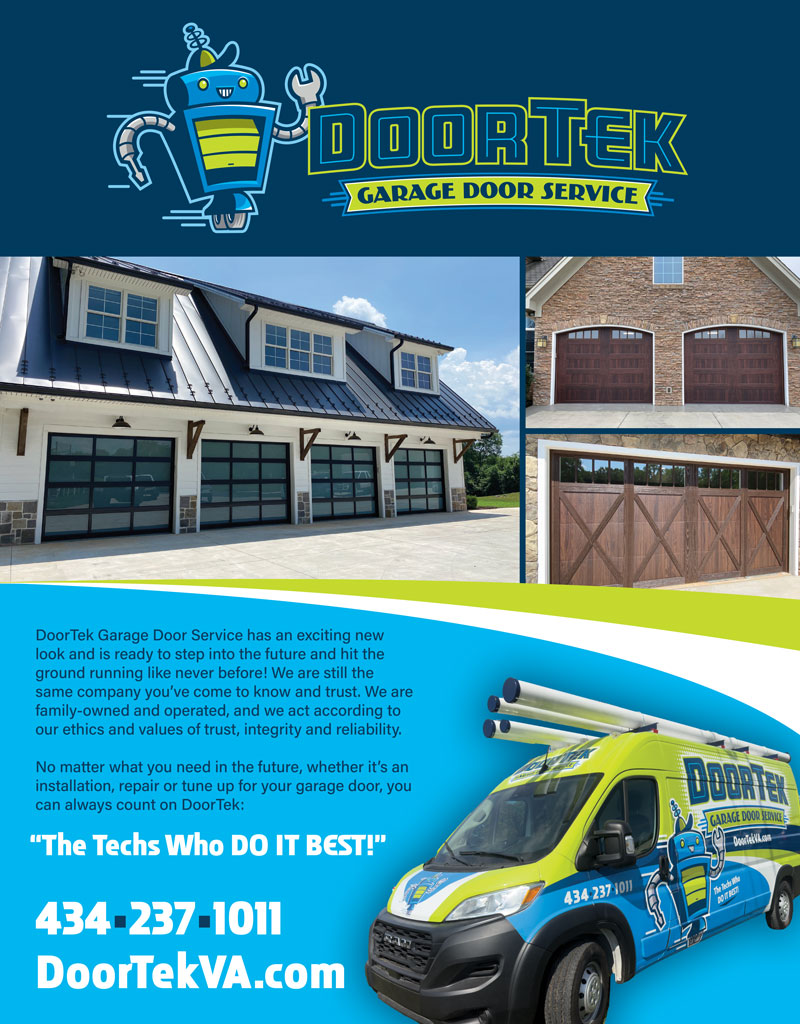The Golden Years | Retirement Checklist for Seniors


When looking forward to our “golden years” we can overlook and under-consider the reality that our bodies may not keep up with where our will would lead us. The dreamer may imagine retiring to a beach with the sand under their feet as the way to go, while the pragmatist may realize a planned community is a little more realistic at their stage in life. For all those in between who are not so sure, there is a myriad of retirement options in beautiful Central Virginia.

Finding the right senior living community is one of the most important decisions a family can make, whether for themselves or with (or for) their elders. Some compare it to buying a house; as with a home purchase, there are many variables to consider, and what is perfect for one family may not be suitable for another. The actual task of sitting down and talking with your partner or parents about retirement options may seem like a daunting act, but it is one that will save you all a lot of lost sleep if handled properly.
First on the list—and probably the most sensitive—is a frank talk about Compare Health Insurance. Have an honest and realistic conversation with all involved about sources of income, assets and insurance policies. Consider how much expense you or your parents can bear and whether this move will require financial help from children or others. The average monthly cost for assisted living is around $3,600, but this varies greatly across the state; pricier memory care facilities can run to $7,500 monthly and more. Everyone who will be part of the financial picture should talk openly and be comfortable with the arrangement. By discussing specifics now, you’ll avoid tension later. In addition, it’s crucial to take into account elements like Medicare Part D plans 2025 to guarantee comprehensive prescription drug coverage under Medicare, ensuring that you have access to the medications you need without incurring excessive out-of-pocket costs.
Ask for a list of costs from the senior living communities considered, and find out what the facilities’ amenities cost as well. Are they included or are there additional fees? There can be pressure to go with the most expensive option out of feelings of guilt—of course, you want the best for your loved ones, but the most expensive option is not always the best, and it may not be the greatest fit for the needs of the elders involved. You can check out sites like summerfieldredlands.com/memory-care/ and see their amenities to get an idea.
When discussing finances, make sure you understand what types of insurance you or your parents carry. Insurance is a huge and complicated field, and senior financial planning options are limitless. Are your seniors covered through a group plan or do they have Virginia Medicare Advantage Part C insurance or both? Do they have a Medicare supplement? Do they have secondary or even tertiary coverage?
One of the first questions you will be asked at facilities you consider is whether long term care insurance is in place, as a separate policy or rider on a life insurance policy; unlike standalone long-term care insurance policies, if you don’t use it, you won’t lose it. Truth be told, the best permanent coverage is the universal life insurance for seniors.
Once finances have been made clear, finding the right level of care should be the next step. Again, this can seem overwhelming, but that honest conversation you started earlier needs to continue here as you or your elders contemplate senior living options. What is the comfort level for driving to the grocery store or standing to cook a meal? How about bathing and laundry duties? Have there been recent falls? Are bills being paid on time or has there been confusion or forgetfulness about regular financial obligations or other things? Have there been changes in physical appearance or the condition of the home, or difficulty solving problems? All of these issues may be symptoms of decline which can help to determine appropriate levels of retirement living and care. It is sometimes best to involve a third party when talking to aging family members about these topics. Having a neutral party begin and facilitate the conversation can put everyone more at ease.
There are many levels of retirement living options to consider, from independent living to assisted living and skilled nursing facilities, e.g., Orchard Park of Kyle: assisted living community. You don’t want to skimp on care, so having the input of doctors and facility staff should help greatly in determining appropriate levels of care. Mobility, memory and incontinence are primary factors in placement of new residents.
Once finances and levels of care are determined, more fun options come into play: amenities! Sit down to discuss what activities make your seniors happy. Do they like working in a garden or taking nature hikes or having their nails done? Are they into book clubs or playing cards or gourmet food? Do they want to be active in a faith-based community? Senior living communities typically offer amenities like health spas, concierge services and business centers, while some cater to those of a specific culture or religion. It’s best to pick three or four amenities and focus on these while searching for the right facility.
Another key factor to consider is location. Some retirees may want to be closer to children and grandchildren; others may prefer to age in place, close to friends in their hometown. Don’t assume—ask.
Now that you have settled on finances, care and location, take some tours and check out facility amenities! Pam Grigg, Community Director at Valley View advises, “You must have a feeling of comfort while touring. Do you see the staff busy and interacting with residents, do residents look happy and social, are there any activities going on and does the community look and smell clean and well taken care of?”
 Central Virginia has many great senior living communities for those seeking to retire. The Summit in the planned community of Wyndhurst is a Lifeplan Community, meaning that residents can enter into independent living and transition to higher levels of care as needed—a great idea for retirees starting the transition before a health crisis hits. The Summit offers a 143-acre campus with lakes, fishing, boating and views of the Blue Ridge Mountains. With a wide range of housing options, from lakeside cottages and apartment homes to skilled nursing, amenities include wellness centers, theatre and concert outings, winery tours, walking groups and gardening. The Summit’s Marketing Director Brenda Dixon says, “It’s the best of both worlds. There is the serenity of the mountains but then the bursting life of the shops of the Wyndhurst neighborhood.” However, if you’re working as travel nurse, you can visit website here for an affordable housing that fits right into your housing stipend.
Central Virginia has many great senior living communities for those seeking to retire. The Summit in the planned community of Wyndhurst is a Lifeplan Community, meaning that residents can enter into independent living and transition to higher levels of care as needed—a great idea for retirees starting the transition before a health crisis hits. The Summit offers a 143-acre campus with lakes, fishing, boating and views of the Blue Ridge Mountains. With a wide range of housing options, from lakeside cottages and apartment homes to skilled nursing, amenities include wellness centers, theatre and concert outings, winery tours, walking groups and gardening. The Summit’s Marketing Director Brenda Dixon says, “It’s the best of both worlds. There is the serenity of the mountains but then the bursting life of the shops of the Wyndhurst neighborhood.” However, if you’re working as travel nurse, you can visit website here for an affordable housing that fits right into your housing stipend.
 Another choice is Valley View Retirement Community, offering month-to-month plans where there is no buy-in or entrance fee. Valley View is designed for independent senior adults who want to live a more carefree lifestyle, with private apartments and adjoining community space. The community such as the Regency Place assisted living community also offers assisted care for those who need more help with the activities of daily living. Valley View has many amenities that make it special as well. Pam Grigg feels that their staff sets them apart, as many have been there for more than ten years. She says, “We pride ourselves on offering a home-like, warm and caring facility…Our residents feel loved and well taken care of…They are our family.”
Another choice is Valley View Retirement Community, offering month-to-month plans where there is no buy-in or entrance fee. Valley View is designed for independent senior adults who want to live a more carefree lifestyle, with private apartments and adjoining community space. The community such as the Regency Place assisted living community also offers assisted care for those who need more help with the activities of daily living. Valley View has many amenities that make it special as well. Pam Grigg feels that their staff sets them apart, as many have been there for more than ten years. She says, “We pride ourselves on offering a home-like, warm and caring facility…Our residents feel loved and well taken care of…They are our family.”
Having lived through this firsthand, my advice—and the advice of many in the field—is to start planning early. It is never too soon to start the conversation. Your parents may surprise you and say they have been thinking about it already. You may discuss how perfect living in baltimore wharf would be for them. Brenda Dixon echoes my sentiments. She says, “Start planning and looking ahead before you are ready to make a move. Don’t wait for a medical event or crisis so that you can be healthy enough to enjoy the amenities the campus offers.” Pam Grigg advises early action as well. She counsels seniors not to dawdle: “Most people wait too late for independent living and end up needing assisted living or skilled care.”
Don’t be scared. You have the best interest of your family at heart. If you’re nervous about beginning a dialogue, consider calling on other people in your seniors’ lives—close friends especially. Get advice from others who have made the move already to senior living. Be patient and positive, and listen to your loved ones’ wants, needs and feelings. Be warm and open and call on them to determine the retirement lifestyle that suits them best. Most of all, empower seniors to research and make their own decisions: ultimately, you’ll be helping help them (and yourself) feel more comfortable with your family’s choices.
If you get overwhelmed, stop, breathe and remember: you’re doing the best you can—and you’re doing it because you care. ✦
Features, finances, golden years, retirement, senior living community






